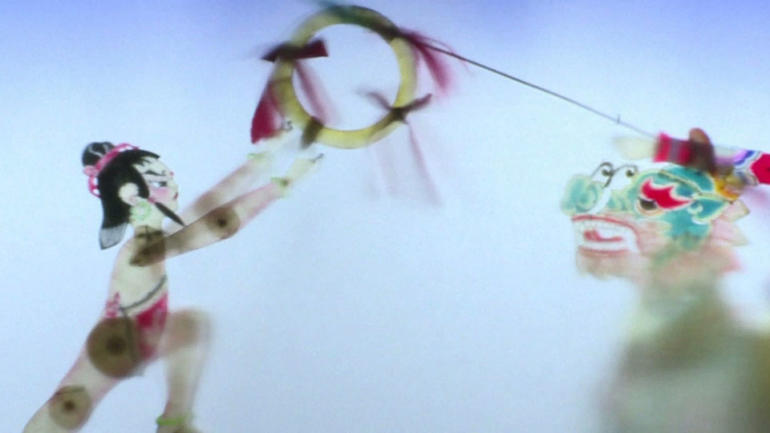It was born thousands of years ago. Now, the art of Chinese shadow puppetry is struggling to survive.
As CGTN’s Frances Kuo reports, it’s being threatened by modern times – and tastes.
A group of artists truly shines – when they’re hiding in the shadows.
Inside a Beijing classroom, tales of conflict come to light, to the delight of a young audience. It’s the art of Chinese shadow puppetry where masters expertly maneuver figures on a translucent screen.
But its popularity is fading as it competes against modern forms of entertainment like TV and video games.
That worries Lu Baogang.
He comes from a family that created one of Beijing’s old schools of shadow theater.
“The future development of the art (shadow play) relies on them (the younger generation),” said Lu. “The hope is on them. This art won’t have hope without giving hope to young people.”
One troupe in Beijing has managed to survive.
It’s made up of about 60 puppeteers with dwarfism like Jin Xinchun.
He had struggled to find work. Now Jin has found his passion by building characters from scratch.
“I am very happy during the process of carving worn leather into a work of art,” said Jin. “I cherish them so deeply that they are just like my babies.”
But the troupe’s founder is concerned about the future.
“I’m very worried because in 10 years, our old artisans who are already in their 70s and 80s will no longer be able to perform on stage,” said Wang Xi, Founder of the Shadow Show Troupe.
Puppeteers have looked for new ways to attract audiences such as incorporating modern themes. Local governments have also pitched in to help keep the art alive.
Puppeteers say audiences can also do their part by spreading the word.
“Shadow play can teach us knowledge and values. It’s also very funny and interesting,” said Mang Gaoxin, said one young audience member.
Pete McCall discusses the cryotherapy craze
CGTN’s Elaine Reyes spoke with certified personal trainer Pete McCall about the trend in cryotherapy treatments.
 CGTN America
CGTN America

